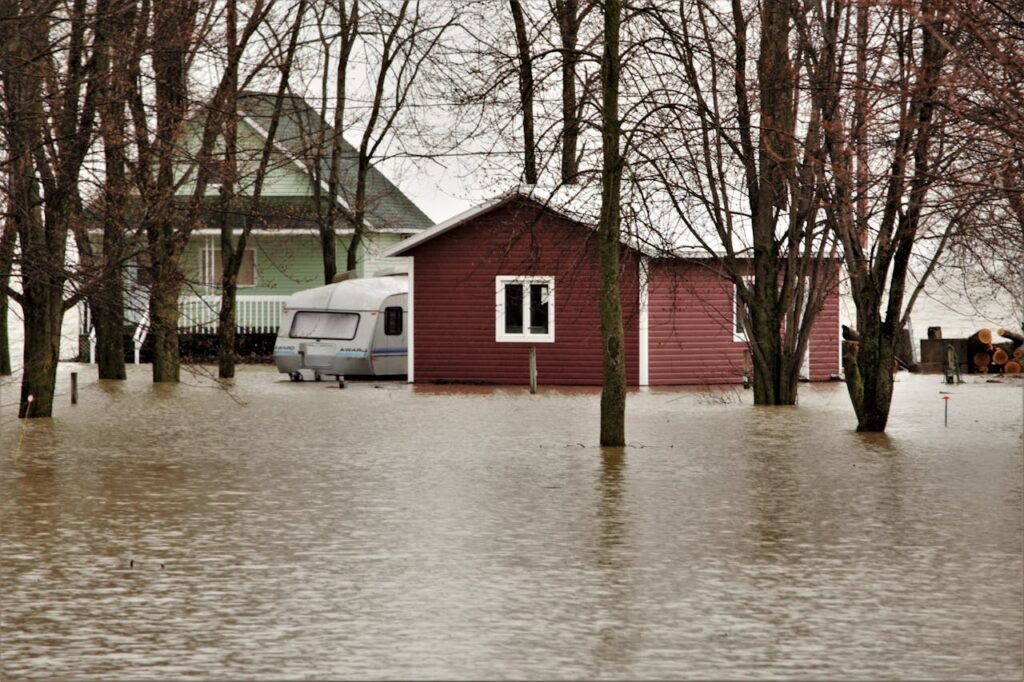In March 2025, the Sustainability Standards Board of Japan (SSBJ) published Japan’s sustainability disclosure standards (SSBJ Standards), providing a clear roadmap for domestic companies regarding sustainability and climate change-related information disclosure requirements.
This article explains the background of SSBJ Standards development, an overview of the published standards, and key points regarding climate-related information disclosure, particularly focusing on physical risks such as flooding.
Reference: https://www.ssb-j.jp/jp/ssbj_standards/2025-0305.html
1. Background of SSBJ Standards Development
The SSBJ Standards were developed for Japanese companies following the international standards established by the International Sustainability Standards Board (ISSB). While corporate sustainability information disclosure has been primarily voluntary initiatives until now, the application of SSBJ Standards will advance the mandatory and standardized disclosure under a unified framework.
The specific scope of application and timing will be determined as related legislation is developed. However, the standards were developed with the assumption that they will be applied to Prime-listed companies that particularly need dialogue with global investors under the Financial Instruments and Exchange Act, and that disclosures based on SSBJ Standards will be made in securities reports.
Following the initial draft publication and public comment period in March 2024, a revised draft was published in November 2024, and after conducting another public comment period on issues related to the calculation period for reporting indicators, the standards were approved by the committee.
2. Overview of SSBJ Standards
SSBJ Standards require companies to disclose how they assess and respond to sustainability-related risks and opportunities, including climate change. With the principle that application of SSBJ Standards should not significantly impair comparability with international disclosures, all requirements of the IFRS Sustainability Disclosure Standards (ISSB Standards) developed based on TCFD recommendations are incorporated in principle, and unique treatments specific to SSBJ Standards are also added or permitted where there is corresponding necessity.
The structure includes the Universal Standard “Application Standards” that sets out the overall picture of standard application and fundamental matters, plus theme-specific standards including “General Standards” for overall sustainability and “Climate Standards” that define specific requirements for climate-related matters. The theme-specific standards correspond to the core content in ISSB Standards, defining the content of: (1) Governance, (2) Strategy, (3) Risk Management, and (4) Metrics and Targets.
3. Key Points on Climate Standards and Physical Risk Information Disclosure
3-1. Physical Risk Perspective in Corporate “Strategy”
The Climate Standards require disclosure of the impact of climate-related risks and opportunities on the company’s business model and value chain. Analysis of areas where climate-related risks and opportunities are concentrated is required, with an example being “identifying concentrations of physical risks in specific geographical locations that affect the supply of specific resources essential for manufacturing certain products, and disclosing regions, facilities, or types of assets.”
Additionally, as companies managing climate-related risks and opportunities, disclosure of short-, medium-, and long-term prospects regarding corporate financial performance and cash flows is required. This includes examples such as costs of physical damage to corporate assets due to climate-related events, expenses related to climate adaptation and mitigation, and ultimately impacts on net income.
From these points, while not explicitly required as standards, we believe the importance of processes such as conducting geographical risk analysis of value chains, analyzing anticipated damages and considering countermeasures, and incorporating these into monetary amounts is suggested.
3-2. Climate Resilience Assessment and Scenario Analysis
The “Strategy” disclosure further requires disclosure of climate resilience assessment based on climate-related scenario analysis. Specifically, this includes disclosing the adaptability of business models in short-, medium-, and long-term periods to impacts identified in scenario analysis, including availability of existing financial resources, asset reallocation and reuse, and impacts of investments currently implemented or planned, along with information on significant uncertainties considered in resilience assessment (e.g., impacts of climate-induced migration).
For companies, this suggests the necessity for detailed analysis, numerical disclosure, and assessment tailored to their business model and value chain – namely the nature of their business, location, and risks they are exposed to. It is also considered important to reflect management’s perspective based on each company’s business environment and consider specific countermeasures, rather than limiting to uniform risk assessment.
3-3. Industry-Agnostic Indicators for Climate-Related Physical Risks
For assets or business activities vulnerable to climate-related physical risks, disclosure of numerical values and percentages, or information regarding their scale, is mandated. While monetary amounts are expected to be the most common indicators, numerical values and percentages are required similar to ISSB Standards to accommodate other measures.
On the other hand, “information regarding scale” cited as another option is uniquely defined by SSBJ Standards to not exclude the possibility of qualitative information that could be more appropriate expression for corporate disclosure. In line with the actual situation of voluntary disclosures implemented so far, companies are permitted to express the scale of assets or business activities subject to disclosure as “large,” “medium,” or “small” after organizing their own approach and scope.
This treatment received both supportive and opposing opinions in public comments. While there were voices supporting flexible responses considering the practical situation where companies would need to bear excessive costs and effort amid unestablished quantitative analysis methods, and risks of disclosed figures potentially being taken out of context, there were also proposals from investor and analyst perspectives to not permit “information regarding scale” as it could impair international corporate comparability, to subordinate it to quantitative information, or to treat it as transitional measures.
As policy, this “information regarding scale” option was added as a unique treatment of SSBJ Standards with the meaning of promoting information disclosure that meets the objectives set by ISSB Standards so that useful information is disclosed to users. Going forward, it is expected that clearer definitions of “assets and business activities vulnerable to risk” and frameworks for quantitative assessment will be established based on international trends, leading to more useful information disclosure for users.
4. Other Notable Points
Reporting Period: Sustainability-related disclosures are required to use the same reporting period as related financial statements and report simultaneously with financial statements. However, when using greenhouse gas emissions measured under the Global Warming Countermeasures Act for reporting, differences may arise between the calculation period and the sustainability disclosure reporting period, in which case reasonable methods should be used to adjust periods to align with the reporting period.
Comparative Information: While disclosure of comparative information for the previous reporting period is required for all numerical and useful information, SSBJ Standards exempt disclosure in the first annual reporting period.
Financed Emissions: The draft required disclosure of financed emissions and gross exposure broken down by industry according to the latest Global Industry Classification Standard (GICS) for financial activities such as lending and insurance, following ISSB Standards. However, public comments pointed out that using GICS requires paid acquisition of data from specific private companies, and similar concerns were raised outside Japan with ISSB Standards revisions under consideration, so disclosure is currently not required for the time being.
5. Conclusion
With the publication of SSBJ Standards that sustainability professionals have been closely watching, Japanese corporate sustainability management has entered a new phase. Particularly, physical risk disclosure is considered an essential element for corporate business continuity and building trust relationships with investors.
Our company leverages its strength in providing high-resolution simulation technology to companies with global operations, supporting analysis and disclosure of physical risks including flood risks.

